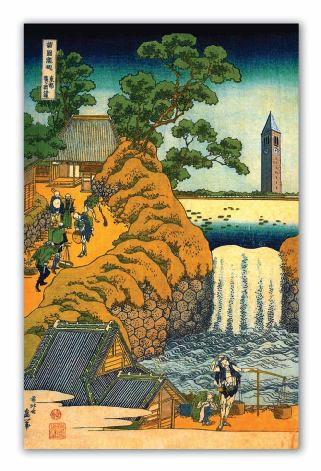Mann Library's haiku softens the daily grind
Mann Library's haiku softens the daily grind

the thief left it behind
the moon
at the window
— Ryokan (1758-1831)
Two decades ago, the Mann Library custodians had a problem. No matter how often they scrubbed, patrons kept scribbling on the elevator walls. One frustrated janitor taped up a blank piece of paper every morning, hoping it would at least corral the graffiti. It did—but didn't change the writings' often negative tone. So circulation desk coordinator Tom Clausen '73, BS '74, began posting a daily haiku poem, occasionally one of his own composition. "I thought that might begin the day on a positive note," he says. "It became a ritual, a little daily practice." Eventually, staffers proposed that the haiku move to a more accessible location—near the dictionary stand at the library entrance, as well as online. Since then, the daily haiku has become part of the library culture, with more than 7,000 poems displayed since 1988.
Written by everyone from school-children to Beat poets to University presidents—including David Skorton—haiku are deceptively simple. Traditional Japanese haiku comprise a pattern of five, seven, and five on, or sound units. On have no English equivalent, and some people incorrectly assume that lines of haiku inherently require five, seven, and five syllables. But what matters more, Clausen says, is a poem's spirit. He describes haiku as a concrete expression of a single moment, written in three lines or fewer and spoken in one breath. "When you read it, you are in essence stepping into the being of the poet and having a momentary glimpse of what that poet felt."
That experience offers a respite from Cornell's academic intensity, says library director Janet McCue, who knows of several faculty who make the Mann haiku part of their daily routine. "We've even spotted David Skorton showing [his wife] Robin Davisson the dictionary stand," McCue says. In May, Skorton wrote a haiku to commemorate the groundbreaking for the Johnson Museum's addition. The event, held on a dreary day, was hosted by museum director Frank Robinson (also a haiku aficionado), sporting a brightly hued hardhat. Skorton's poem: Yellow hat on gray / New building rising today / New era for art.


